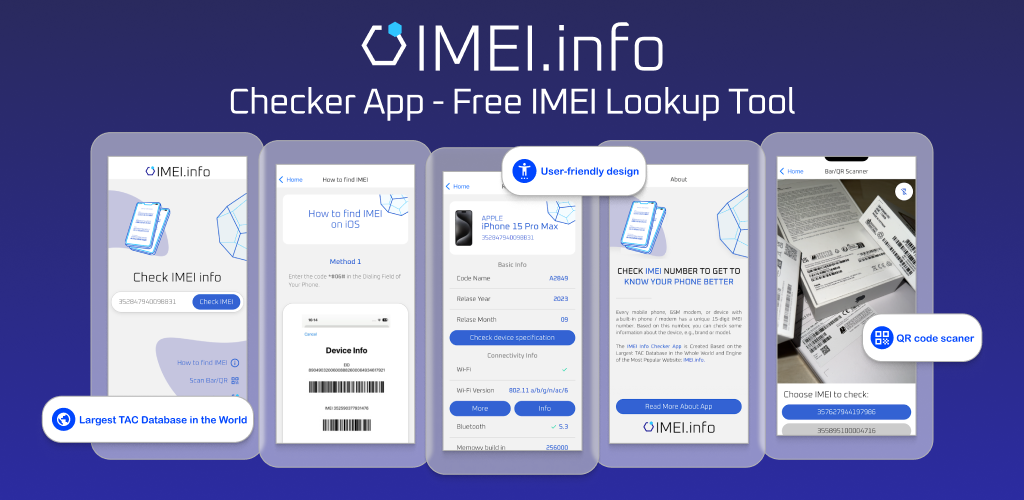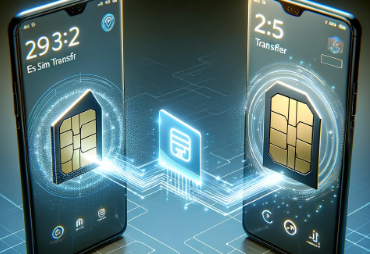Wondering what actually all those 2G, 3G, 4G and so on mean? Do you hear about it often, yet you are not able to connect it with any rule or visualization? Let’s learn something about all the wireless cellular technology generations. It's time to come along with those technologies that have gone down in history and solutions that continue to await introduction.
That may be quite easy to understand, as 1G is for the first generation of wireless cellular technology, 2G refers to the second one, 3G to third, and all the rest goes analogously. It will not surprise us, as that behind each subsequent technology faster and more advanced features are hidden. Nowadays, 3G and 4G technology are those most popular and commonly used. However, on the horizon appeared another, obviously more modern technology, not surprising in its name – 5G. Does it mean that all the previously used will automatically disappear? Can’t say for sure. But at first, we have to look at all of them, to see what they are all about.
-
1G
This one is history now. It includes voice only. It is the first generation of wireless cellular technology, which began in the 80s. It was for voice calls only. The maximum speed of 1G was 2.4 Kbps.
-
2G
From 1991 we’ve got 2G tech. It comes up with call and text encryption, along with data services such as SMS, MMS or picture messages. It was the revolution, which took cell phones from analog to the digital world. The max speed of 2G with GPRS (General Packet Radio Service) is 50 Kbps.
-
3G
The third generation, introduced in 1998, enables unrestricted radio access to the global telecommunications infrastructure via the terrestrial segment, both for stationary and mobile users. Audio and video transmission and packet data transmission are included here. The transition to the 3G telephony system required modernization of all elements of the network architecture. The maximum speed can reach 2 Mbps for non-moving devices and 384 Kbps moving vehicles.
-
4G
Released in 2008 4G involves sending audio and data using IP based packet commutation. It has a simplified backbone network architecture and improved data rate in the radio network in relation to previous standards. Internet via 4G network achieves speeds that allow you to comfortably use those Internet functions that require the highest parameters. Nowadays, 4G is the most popular generation. Max speed of 4G can reach 1Gbps for devices which stay in one place, and 100 Mbps for those in move.
-
5G
The newest, 5G technology offers way more fast data rates, higher connection density, lower latency and so on. So let’s take a closer look at this super modern technology.
Key performance requirements defined by the ITU for the 5G network:
- Up to 20 Gbps bandwidth in connection to the terminal ("down")
- Up to 10 Gbps bandwidth in network connection ("up")
- 4 ms latency for eMBB applications and 1 ms for URLLC applications
- Spectral efficiency up to 30 bit / s / Hz
- Error level for the URLLC application at 10-5
5G technology allows for much faster Internet access. The achieved data transfer speed exceeds the needs of the individual Internet user. The estimated internet speed in 5G is in the range of 10 to even 100 Gb per one sec! Specialists developing this standard says that the speed of the 5G Internet can ultimately be even greater. The currently popular LTE technology, which has already been a kind of revolution in the telecommunications industry, achieves a bandwidth of 300 Mb per sec for comparison. What is important, the efficiency of the latest technology is not to be affected by the number of users currently using the network. Of course, it is not only focused on the standard needs of individual network users. It allows efficiently and seamlessly exchanging and processing data via a network between buildings, cars, various systems (health, security) and electronic equipment and household appliances.

What will change 5G?
Data on the phone will be downloaded a thousand times faster than today. We will not have to install applications on smartphones. Fast connection to the Internet will make us able to use them in the cloud. The 5G channels are irreplaceable here because they provide delays not counted in tens or hundreds of milliseconds but in individual milliseconds. According to preliminary estimates, they will be approximately one hundred times lower than the delays observed in 4G networks. When it comes to peak speeds, 5G networks pierce 4G networks at least 20 times. It is estimated that the minimum data download speeds in 5G networks will not be lower than 20 Gbps, whereas in 4G networks it is 1 Gb per sec.
Does 5G Mean the End of 2G, 3G & 4G?
However, we cannot say that it will be the end of 4G and previous technologies. At least not now. The whole process of implementing this technology will take a lot of time. And although we are definitely closer to that than ever, we will not imply 5G right away. It requires a lot of many technological changes. Nevertheless, it is a chance for a definitely better quality of life. Yet if we look more prospectively, and reach for a little further future, then we can say that one day, 5G will definitely replace the existing technologies, because - as we can see above - in many aspects it is far beyond that.

Leveraging Technology for Staffing Solutions in Texas
In the ever-evolving landscape of the job market, Texas stands as a dynamic hub of economic activity. With its diverse industries ranging from technology and healthcare to energy and manufacturing, the state presents unique staffing challenges and opportunities.

Where and How to Send Faxes?
Faxing remains an important method of document transmission despite the advancement of digital technologies. There are situations where sending a fax is the most convenient or even the only way to transfer information.

IMEI Tracking: How Law Enforcement Agencies Use IMEI To Combat Crime
Smartphones are an everyday part of our lives, but many people are unaware of the unique, 15-digit IMEI (International Mobile Equipment Identity) serial number associated with their phone.

A Step-By-Step Guide To Converting PDF To Word Using Smallpdf
Whether you are a professional employee or a business entrepreneur, you must have encountered issues in situations where you had to convert PDF files to Word for quick editing and customizations.

How many eSIMs can be used in iPhone?
Are you looking to streamline your mobile experience with an eSIM for your iPhone? The advent of eSIM technology has revolutionized the way we connect, allowing for a more seamless and efficient use of our devices. With an eSIM iPhone, you can forget about the hassle of physical SIM cards and enjoy the benefits of multiple network plans on a single device. But how many eSIMs can an iPhone support? And how do you go about adding an eSIM to your iPhone? In this article, we'll dive into the ins and outs of eSIM capabilities on your SIM iPhone, providing you with a step-by-step guide to getting set up. Keep reading to unlock the full potential of your iPhone with eSIM technology and learn how to enhance your connectivity with ease.

IMEI Info Checker App
The awaited moment has arrived! After a period of anticipation, we take immense pride in announcing the launch of the IMEI Info Checker App, marking a pivotal moment in accessing concealed mobile device information. In today's digitally intertwined landscape, understanding your device's nuances is pivotal. This long-awaited unveiling undoubtedly simplifies access to concealed information about any mobile device. Soon available on the App Store for iOS and the Play Store for Android, this app promises a transformative shift in how users interact with their device data.

eSIM Quick Transfer - All You Need to Know
In the ever-evolving landscape of smartphone technology, eSIM (embedded SIM) has emerged as a game-changer, offering greater flexibility and convenience for users. One of the latest innovations in this realm is the eSIM Quick Transfer feature, which streamlines the process of transferring eSIM profiles between devices. Whether you're an iPhone aficionado or an Android enthusiast, understanding the ins and outs of eSIM Quick Transfer is essential for maximizing the potential of your mobile experience.

iPhone GSX Check
Are you seeking essential details about your iPhone's carrier network, warranty status, and other critical information? The iPhone GSX Check provides comprehensive insights into various aspects like simlock network, Find My iPhone status, warranty info, and more.




















So no shit! How about acting like a reporter and ask an actual expert in the telecomm field? Or give an "educated" guess on when 4g will no longer be serviceable?